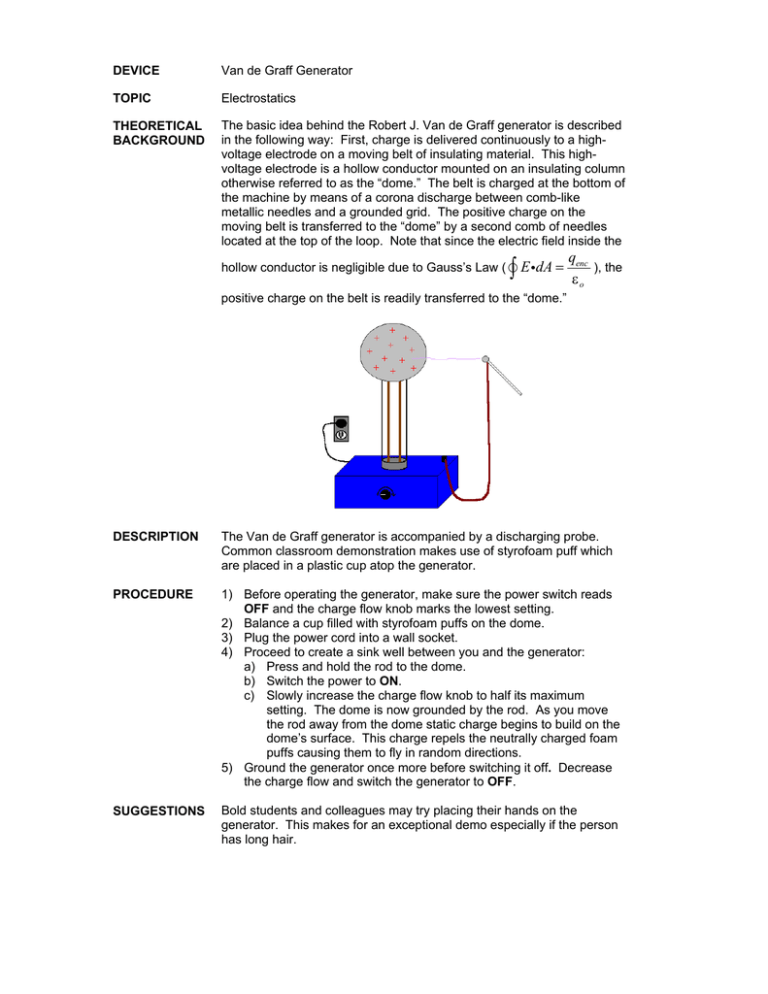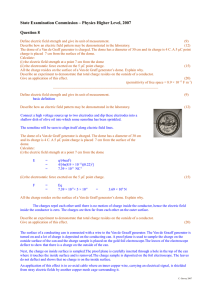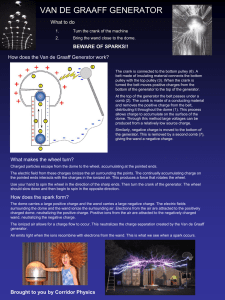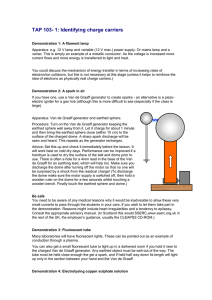DEVICE TOPIC THEORETICAL Van de Graff Generator
advertisement

DEVICE Van de Graff Generator TOPIC Electrostatics THEORETICAL BACKGROUND The basic idea behind the Robert J. Van de Graff generator is described in the following way: First, charge is delivered continuously to a highvoltage electrode on a moving belt of insulating material. This highvoltage electrode is a hollow conductor mounted on an insulating column otherwise referred to as the “dome.” The belt is charged at the bottom of the machine by means of a corona discharge between comb-like metallic needles and a grounded grid. The positive charge on the moving belt is transferred to the “dome” by a second comb of needles located at the top of the loop. Note that since the electric field inside the hollow conductor is negligible due to Gauss’s Law ( ∫ E idA = qenc ), the εo positive charge on the belt is readily transferred to the “dome.” DESCRIPTION The Van de Graff generator is accompanied by a discharging probe. Common classroom demonstration makes use of styrofoam puff which are placed in a plastic cup atop the generator. PROCEDURE 1) Before operating the generator, make sure the power switch reads OFF and the charge flow knob marks the lowest setting. 2) Balance a cup filled with styrofoam puffs on the dome. 3) Plug the power cord into a wall socket. 4) Proceed to create a sink well between you and the generator: a) Press and hold the rod to the dome. b) Switch the power to ON. c) Slowly increase the charge flow knob to half its maximum setting. The dome is now grounded by the rod. As you move the rod away from the dome static charge begins to build on the dome’s surface. This charge repels the neutrally charged foam puffs causing them to fly in random directions. 5) Ground the generator once more before switching it off. Decrease the charge flow and switch the generator to OFF. SUGGESTIONS Bold students and colleagues may try placing their hands on the generator. This makes for an exceptional demo especially if the person has long hair.











